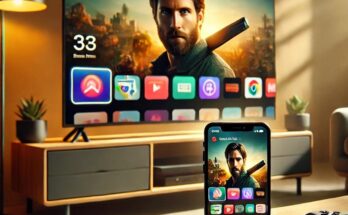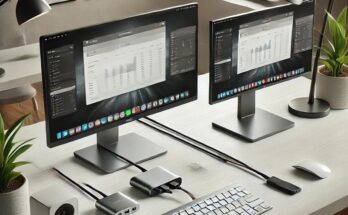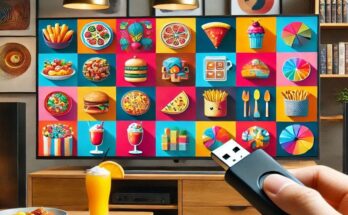Our screens are portals to information, entertainment, and connection. Whether it’s your computer monitor, laptop display, or even your smartphone screen, how it presents information can significantly impact your experience. Luckily, most modern devices offer a surprising amount of control over how your screen displays content. This comprehensive guide will delve into various ways to customize your screen experience, explore settings that might be hidden in plain sight, and offer tips to optimize readability and comfort for your eyes.
The Basics: Brightness and Contrast
The most fundamental adjustments you can make are to the screen’s brightness and contrast. Here’s how to access these settings:
- Windows PC: Right-click on an empty area of your desktop and select Display settings. Alternatively, you can access these settings through the Windows search bar. Within the Display settings, locate the sliders for Brightness and Contrast. Adjust them to your preference, keeping in mind the ambient lighting in your environment.
- Mac: Click on the Apple icon in the top left corner of your screen and select System Preferences. Go to Displays. Here, you’ll find sliders for Brightness and Contrast.
- Smartphones (Android & iOS): Swipe down from the top of your screen to access the quick settings menu. Look for the brightness slider and adjust it to your liking. Some phone models might require you to swipe down again to expand the quick settings menu and reveal additional display settings like contrast or night mode (discussed later).
Beyond the Basics: Advanced Display Settings
Most operating systems offer a treasure trove of additional display settings for further customization. Let’s explore some commonly found options:
- Resolution: This setting determines the sharpness and clarity of the image displayed on your screen. Higher resolutions offer more detailed visuals but might require a more powerful graphics card (on PCs) to run smoothly. Consult your device’s manual or manufacturer’s website for recommended resolutions.
- Color Temperature: This setting affects the overall warmth or coolness of the displayed colors. A warmer color temperature can be easier on the eyes at night, while a cooler temperature might be preferred for creative work requiring accurate color representation.
- Night Mode (or similar): Many devices offer a night mode that reduces blue light emission from the screen. Blue light exposure at night can disrupt sleep patterns. Enabling night mode can provide a warmer and more eye-friendly viewing experience in low-light environments.
- Refresh Rate (For Monitors and Some Laptops): The refresh rate determines how often the image on your screen is updated per second. Higher refresh rates offer smoother visuals, especially noticeable in fast-paced games or videos. However, higher refresh rates can also consume more power. Match the refresh rate to your needs and your device’s capabilities.
- Scaling: This setting allows you to adjust the size of text, icons, and other elements on your screen. This can be helpful if you find the default settings too small or too large.
Finding the Perfect Balance:
Experiment with these settings to find the combination that provides the most comfortable and visually pleasing experience for you. Remember, optimal settings will depend on factors like the type of content you primarily use your device for, the lighting conditions in your environment, and even personal preferences.
Going Beyond Settings: Hardware Considerations
While software settings offer a great deal of control, your screen’s hardware capabilities also play a significant role in display quality. Here are some additional considerations:
- Panel Type: The type of display panel (e.g., IPS, TN, OLED) can affect viewing angles, color accuracy, and response times. Research the different panel types and their strengths and weaknesses to choose a device that best suits your needs.
- Anti-Glare Coating: A glossy screen might look vibrant but can cause reflections and glare in certain lighting conditions. Consider a screen with an anti-glare coating if you frequently use your device in bright environments.
- Calibration Tools: For professionals working with color-critical tasks, hardware calibration tools can be used to ensure the most accurate color reproduction on your screen.
Ergonomics and Eye Care:
Prolonged screen time can strain your eyes. Here are some ergonomic tips to promote healthy screen usage:
- Maintain Proper Distance: Sit at an arm’s length distance from your screen.
- Adjust Sitting Posture: Maintain good posture with your back straight and your neck in a neutral position.
- Take Breaks: Look away from the screen every 20 minutes or so and focus on a distant object for 20 seconds. This helps to relax your eye muscles.
- Reduce Blue Light Exposure: Utilize the built-in night mode features or consider third-party software that filters blue light further. These can be especially helpful for evening use to minimize sleep disruption.
Accessibility Features for a Customized Experience
Modern operating systems offer various accessibility features that can also enhance your screen experience:
- Font Size and Style: Adjust the font size and style of text displayed on your screen. Larger fonts can be easier on the eyes, and different font styles can improve readability for those with dyslexia or other visual impairments.
- Color Filters: Color filters can be used to adjust the color scheme of your screen for users with color blindness or visual processing disorders.
- Inverted Colors: This setting inverts the colors on your screen, displaying light text on a dark background. While not for everyone, some users find this easier on the eyes in low-light environments.
The Power of Personalization:
By taking advantage of the available settings, exploring hardware options, and incorporating ergonomic practices, you can personalize your screen experience to maximize comfort, productivity, and eye health. Remember, the ideal display configuration is unique to you, so don’t be afraid to experiment and find what works best! Now, go forth and customize your screen for a truly personalized viewing experience!




